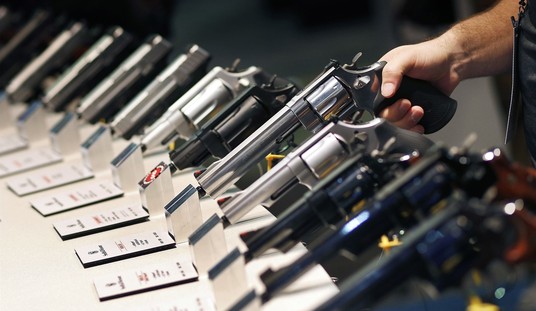According to the Marine Times, the Corps is considering a number of commercial-off-the-shelf (COTS) upgrades to enhance the combat accuracy of Marine riflemen. The Marines will also be investigating a continued shift away from full metal jacket (FMJ) rounds to open-tip (rifle) and hollowpoint (pistol) ammunition for combat.
The rifle upgrades to the existing Marine Corps M16A4 assault rifle will use many upgrades that civilian AR-15 users have preferred for years for hunting and competition on their semi-automatic-only rifles.
Perhaps the most important single upgrade is the adoption of a free-floating barrel, so that Marines shooting the rifle using a sling or bipod doesn’t experience a significant point-of-aim/point-of-impact (POA/POI) shift. The Corps is also considering a new and more consistent trigger, and a shift in reticle designs for the preferred Marine optic, the Trijicon ACOG, which will obscure less of the target.
The rifles will also get an ambidextrous charging handle and bolt catch releases to make them more suitable for left-handed fire.
The most controversial upgrade being considered to the M16A4 is switching from a flash suppressor to a compensator on the muzzle of the gun. AR-15 competition shooters in time-based events have long preferred compensators to enable faster followup shots.
The “knock” against compensators is that they are much louder to those Marines to the left and right of the shooter because they direct burning gasses to the back and side, and they typically generate more muzzle flash in low-light conditions. This would potentially betray the shooter’s firing position and possible generating enough flash to also degrade a shooter’s night vision.
The development in the upgrade program that may shock most readers is that the Marines are looking to build upon the use of open-tip and hollowpoint ammunition. It has long been an accepted myth that the Geneva conventions outlaw the use of hollowpoint ammunition in combat, a statement which has never been true.
There were four Geneva conventions and two additional protocols devoted to the humane treatment of civilians, POWs, and wounded or sick soldiers during wartime, but none of them discussed the use of certain kinds of ammunition.
It was instead the Hague Convention of 1899 that included a treaty between signatory nations that they would abstain from using “bullets which expand or flatten easily in the human body.” The United States never signed nor agreed to this treaty, and has regularly used small arms ammunition designed to yaw, fragment, flatten, or expand.
The Marines have been using the “open-tip” (hollowpoint) MK318 rifle round in Afghanistan for the last half-decade, and are now looking to adopt it as the general issue round, replacing the under-performing M855 round. If accepted, the existing supplies of Corps M855 will be expended during normal training over the next ten years before the Marines transition fully to the Mk318 round. The Marine Times refers to the MK318 by its less common name (the AB49 Special Operations Science and Technology 5.56mm cartridge) throughout the article, for reasons we have yet to discern.
Perhaps of more interest than the increased acceptance of MK318 (which is an additional development to an old story) is the possible adoption of hollowpoint pistol ammunition by the Marine Corps.
Traditionally, the U.S. military has paid nominal lip-service to the Hague Convention of 1899 and had issued FMJ pistol bullets, with only special operations forces currently using hollowpoint handgun ammunition. The Marines have been closely watching the FBI’s decision to drop the .40 S&W and shift back to 9mm pistols with modern hollowpoints.
9mm pistols using modern hollowpoints create wounds indistinguishable from those of modern .40 S&W and .45 ACP ammunition using similar bullet designs, with the additional benefits of having lower recoil and high magazine capacity. Modern hollowpoints create larger wound channels and transfer their energy better to targets than FMJ rounds.
These relatively inexpensive “off the shelf” solutions come at a time where defense budgets are shrinking.
Update: MARSOC has just officially adopted the Glock 19 9mm as an authorized individual weapon.







Join the conversation as a VIP Member